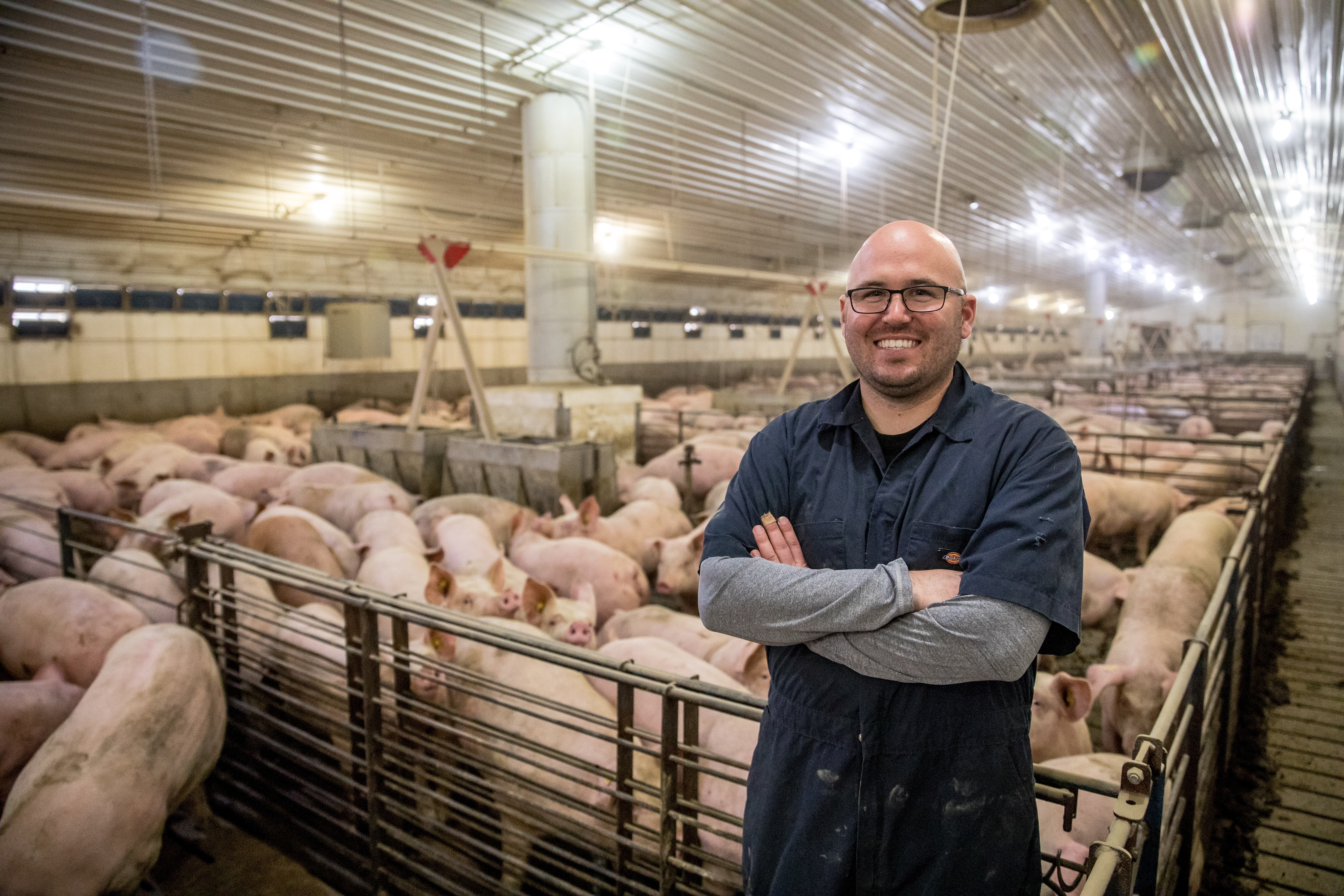Use PIC’s updated caliper ranges for accurate body condition scores to improve sow longevity.
Keeping sows in the herd longer improves tight profit margins. Optimal body condition is important as both under- and over-conditioned sows are at greater risk of removal from the herd.
To improve sow longevity, PIC has updated the body condition caliper ranges for more accurate body condition scoring and corresponding feeding recommendations specifically to match the PIC Camborough®’s genetic potential.
Contact the PIC team for an update kit for any version of your calipers.
Improved swine genetics deserve improved management tools
Modern genotype females are faster-growing and leaner than their predecessors. PIC Maternal lines have increased growth rates at a similar rate as terminal lines over the last 10 years.
Because of this increased growth and body composition changes, as well as an extensive data review to reflect reproductive performance and sow robustness, the caliper ranges and categories for PIC females have been updated. Recent findings indicate that due-to-farrow females with a caliper score of 13 and 14, based on the PIC caliper sticker have a similar elevated risk of prolapse as underconditioned (Category 2) sows. This update aligns body condition targets with the latest knowledge on reproductive success and lifetime performance, reinforcing efforts to improve sow retention.
Optimal body condition is important as both under- and over-conditioned sows are at greater risk of removal from the herd.
Updated caliper ranges highlight management changes easily
The updated sticker allows for more accurate body condition assessment and better identifies where feeding program adjustments are needed to reduce prolapse risk. The goal is to have less than 30% of sows score below 15 units (based on the original caliper scale) at due-to-farrow, or categories 1, 2, and 3a on the updated caliper sticker.
The updated PIC ranges for use with the caliper create the following categories:
1. Risk: skinny condition (9 caliper units or less)
2. Recovery: under condition (10, 11, and 12 caliper units)
3a. Wean Target (13 and 14 caliper units)
3b. Farrow Target (15, 16, and 17 caliper units)
4. Risk: over condition (18 caliper units or greater)

Sows in these categories are fed two different feeding levels. For any sow that measures at or below the line between recovery and wean target (13 caliper units or less), PIC recommends 8.6 Mcal of metabolizable energy (ME) or 6.5 Mcal of net energy (NE) intake per day. This equates to about 6 to 6.5 pounds per day depending on dietary energy concentration.
Those in the first risk category are unlikely to gain enough to reach the ideal range by their next farrowing, and other management procedures should be considered to help them recover. PIC’s technical services teams are available to help with recommendations.
The remaining caliper categories for wean target, farrow target and over-conditioned sows (not for gilts) are fed the same feeding level. PIC recommends 6.65 Mcal ME per day or 4.95 Mcal NE per day. This equates to about 4.5 to 5.0 pounds per day depending on dietary energy concentration. However, if the average breeding weight for gilts is less than 350 pounds (160 kg), the base level for sows can be 5.9 Mcal ME per day or 4.4 Mcal NE per day. A minimum intake of 11 g of SID Lysine per day and 6.8 g of STTD P per day is recommended for gestating gilts and sows.
“We do not recommend feeding over-conditioned sows less than ideal sows,” says Weasley Orlando, PIC’s Global Nutrition Programs Director. “Cutting feed during gestation does not greatly affect her body condition and may result in other negative impacts by feeding them below maintenance energy needs. These sows will typically reduce their body condition during lactation and care must be taken to not overfeed them again during the next cycle. Be aware sometimes it may require more than one cycle to adjust the condition of over-conditioned sows.”
It is important to remember gilts might be heavier but not over-conditioned due to their genetic growth potential. Thus, do not categorize gilts by body condition and never feed them less than 5.9 Mcal ME per day or 4.4 Mcal NE per day throughout gestation, as they are still growing. PIC does not recommend using a caliper on gilts to determine feeding levels.

“Weight at first breeding and subsequent parities affects a female’s subsequent reproductive performance. Female longevity relies on proper nutrition management, and underfeeding gilts bred at a heavier weight negatively impacts their long-term success and yours,” says Orlando.
PIC recommends monitoring body condition of sows at farrowing. Reevaluate operation-wide feeding and body condition management if there are greater than 30% of females below 15 caliper units observed at farrowing.
Moving forward with management
Contact the PIC team for an update kit for any version of your calipers.
Monitoring body condition scores helps you understand the percentage of females that do not fall in the target category and adjust your farm’s feeding program management. By understanding your sows’ body condition and improving their longevity, you can also improve your profit margin.
Accurate body condition scoring is one of PIC’s four pillars focused on sow robustness. To support key management areas, we have a hands-on technical support team that focuses on female reproduction and nutritional requirements. The team visits customer farms and provides technical expertise on how to best manage and feed a PIC animal to maximize longevity.
To learn more about how you can find success with PIC females, contact your local PIC rep or visit our resources page.






